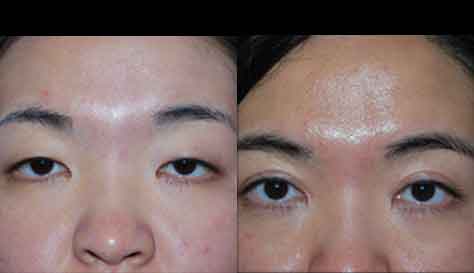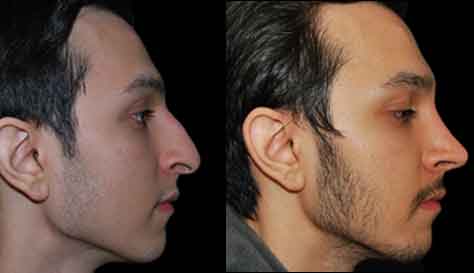Fat Transfer
Conveniently located to serve the areas of New Jersey and New York

Fat transfer (also called fat injection, fat autotransplantation, or fat grafting) is a medical procedure that harvests fat from one part of the body where an excess exists and then places it into another part of the face where the additional volume is needed for aesthetic purposes. Plastic Surgery of Short Hills proudly provides this facial cosmetic procedure to help patients in the New Jersey area reclaim their youthful look.
Contents
- 1 Fat Transfer vs Injectable Fillers
- 2 The Fat Transfer Procedure
- 3 Contact Our Office
- 4 FAQ
- 4.1 What do I need to avoid before surgery?
- 4.2 What about my daily medications before surgery?
- 4.3 What happens after surgery?
- 4.4 Are there any dietary restrictions following surgery?
- 4.5 When will my stitches be taken out?
- 4.6 How soon will I be able to exercise?
- 4.7 When will I be able to see the results?
- 4.8 What is special about the way Dr. Ovchinsky does the surgery?
Fat Transfer vs Injectable Fillers
There are several advantages of fat transfer as compared to the use of a synthetic filler:
- Patients own tissue is used thus virtually eliminating the risk of infection, allergic and foreign body reaction
- If done correctly, the results of fat transfer have been shown to persist longer as compared to most facial fillers.
- Fat cells (stem cells in the adipose tissue) have been shown to have a positive effect on the skin making the skin look fresher and healthier
The Fat Transfer Procedure
The fat transfer procedure takes about 30 minutes to an hour to complete. First, some fat is harvested using liposuction technique either from the belly or the thigh area through a very small incision under local anesthesia. The fat cells are then separated from the bodily fluids and reinjected into the areas of the face similar to how a filler injection is performed.
Most of the facial areas can be treated with fat transfer. The most common areas treated are:
- nasolabial folds
- marionette lines
- midface
- tear-trough areas
- chin and jawline.
Common side effects include some bruising and swelling secondary to injection and harvesting. Occasionally, injected fat may appear lumpy, especially in the areas of thin skin.
Overall, fat transfer is a very good technique for facial rejuvenation that may lead to long-lasting results with an additional benefit of making a positive effect on skin quality.
Contact Our Office
Dr. Alexander Ovchinsky is double board-certified and fellowship-trained exclusively in Facial Plastic and Reconstructive Surgeon located in Short Hills, NJ, who is very skilled and has a vast amount of experience with the fat transfer procedure. If you’re interested in learning more about the treatment, don’t hesitate to contact our office to schedule your initial consultation today.
FAQ
What do I need to avoid before surgery?
If you are on “blood thinners,” you will be asked to stop them approximately one week prior to surgery. We also ask that you avoid certain over-the-counter medications. If you are taking some herbal supplements, you should stop those as well as they may contain blood thinning substances. Also, you have to completely quit smoking at least two weeks before surgery.
What about my daily medications before surgery?
You will have a preoperative appointment well in advance of your surgery when we will review all mediations with you. If you are on “blood thinners,” you will be asked to stop them approximately one week prior to surgery. We also ask that you avoid certain over-the-counter medications. You may continue taking most routine medications up until the morning of surgery with a small sip of water.
What happens after surgery?
You will go to the recovery room for a few hours until you are fully recovered from anesthesia. Once you are stable you will be taken home (or to a hotel) by your family member or a friend. You will want to stay relaxed for the first few days. You will need to keep your head elevated when in bed to help with faster resolution of swelling. You should begin to start walking, eating, and using the restroom the day after surgery. Your activity can slowly increase each day but it will take up to 2 weeks before you start to feel like your old self again. You should avoid any strenuous activity for 4 weeks. You will need to take medication prescribed to you by Dr. Ovchinsky, which usually include antibiotics, pain medicine, antibiotic ointment for the incisions, and occasionally anti-nausea medications.
Are there any dietary restrictions following surgery?
No. Patients can eat whatever they want. Advance your diet from liquids (fruit juice, milk shake, etc.) to soft food (pudding, macaroni and cheese, mashed potatoes and gravy, oatmeal, pasta) to solids as tolerated. To prevent dehydration, please drink as much juices and nutritional fluid as possible.
When will my stitches be taken out?
Stitches are normally removed five to six days after your surgery.
How soon will I be able to exercise?
Dr. Ovchinsky recommends that patients do not return to exercise for three weeks after their procedure.
When will I be able to see the results?
You may see the difference right away, and more so once the swelling goes down within the first one to two weeks. As with any surgical procedure, it takes anywhere from 6 to 12 months for the results to become final.
What is special about the way Dr. Ovchinsky does the surgery?
Dr. Ovchinsky tailors his surgical technique to an individual patient rather than using the same “run of the mill” surgery on everybody. The technique he uses causes minimal pain, has natural results, and is long-lasting. The vast majority of patients are quite surprised afterward at how little discomfort they have and how quickly they return to normal activity. Most patients have minimal bruising. Finally, with Dr. Ovchinsky technique and attention to details during skin closure, scars are typically minimal and are often difficult to see once they have fully matured.





